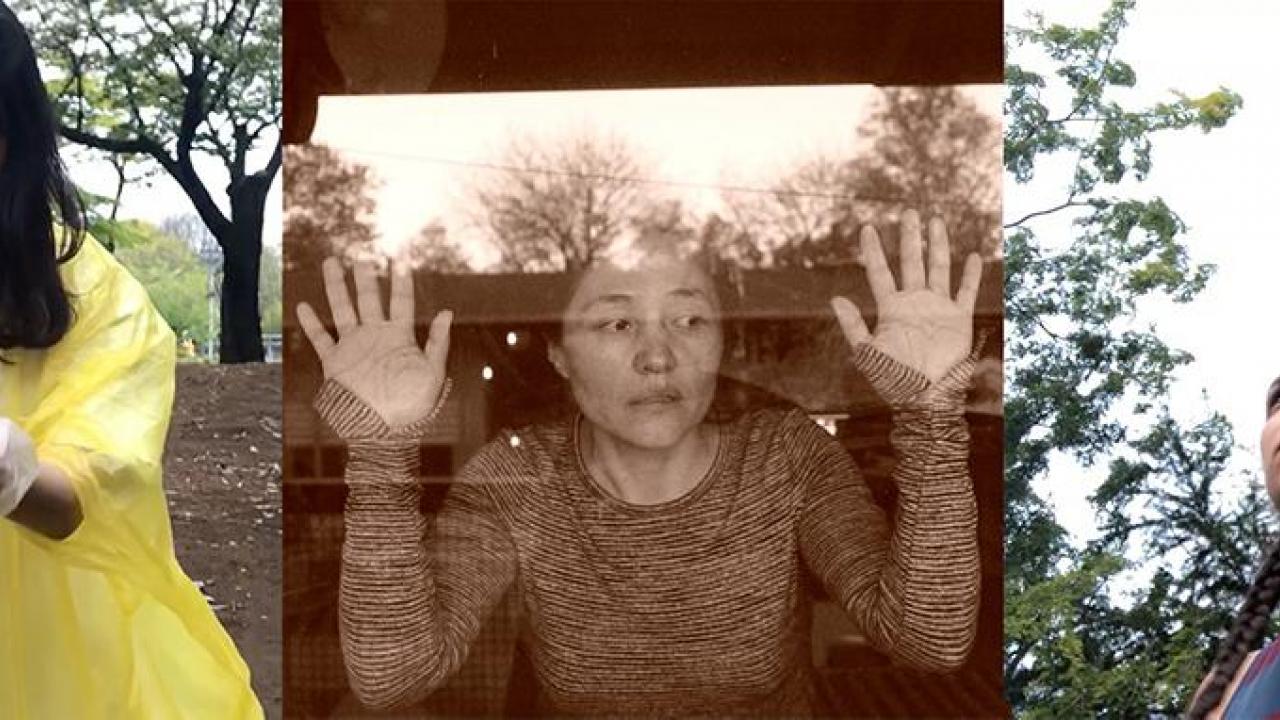This blog compiled by Media Relations Intern Hayley Morris
AntigoneNOW was created in lockdown in April 2020. The publication, American Theatre, wrote a story recently about its uniqueness — a theatre production under the restrictions of COVID-19. We excerpt it here. Go to the link in the bottom of this story for the full feature.
When the COVID-19 pandemic closed the theatres, the work’s co-directors, Margaret Laurena Kemp, co-director and associate professor of theatre and dance, and Sinéad Rushe, award-winning Irish director and UC Davis Granada Artist-in-Residence, radically reimagined their originally planned stage production at University of California, Davis, as a 20-minute performance film that was rehearsed, directed and created online. In the 24 hours it was accessible at UC Davis, it had about 700 viewers.
AntigoneNOW has screened at UC Davis, Cairo International Festival of Experimental Theatre, Northwestern University’s Wirtz Center for the Performing Arts, London School of Sound, Michael Chekhov Association USA, Valparaiso University, and SPE Media Festival.
KEMP: Before the pandemic, when we were working toward the live show, we were enthusiastic about how the language in the Seamus Heaney translation evoked the natural world: dust, earth, wind, birds, darkness, light. The natural world spoke to both our ways of seeing and making, to randomness and form.
RUSHE: In the switch to the digital format, these images became our linchpins. We compiled a shot list of simple pictures: washing hands, lighting a candle, shoveling dirt, or walking into the distance. They were a visual guide to the atmosphere of the play. We gave the list to the cast to shoot whenever and however they could. We also asked them to film certain parts of the script in a particular set-up with a precise set of actions, as well as inviting them to propose shots of their choice. It was both prescribed and freewheeling.
KEMP: Sinéad “showed up” online to co-direct a group of actors with whom she had no kinship. She had to rely on the trust they had in me, and they had to rely on my trust in her. The cast knew that, yet they believed that if we all bring the commitment, we can do something to transform this terrible experience. They had faith in a way of being with each other, listening to each other and engaging with imaginations that weren’t their own.
RUSHE: This carried through into the editing, where Margaret extracted the actors’ voices from their clips and used them to serve another’s performance. We took apart the voice, body, and atmosphere in each person’s clip and displaced them. Nothing belonged to anyone; one Antigone’s voice was accompanied by another Antigone’s body. The actors had complete control over their offer, but they had to relinquish their hold on the singularity of their vision.
KEMP: We weren’t physically together, but we felt some sense of “togetherness” nonetheless.
RUSHE: We tried to use this digitally disembodied hinterland to find a collectively embodied “home base,” a new topography of collaboration that embraced lo-fi imperfection and polyphonic authorship. In this way, we somehow “landed” in the process and found our place.
Read the full story here. Read the Arts Blog’s initial coverage of the event here.
